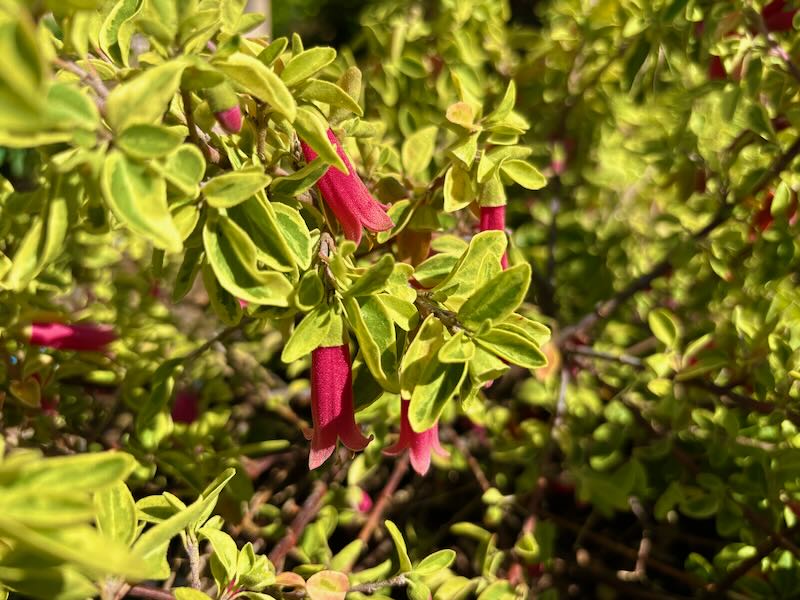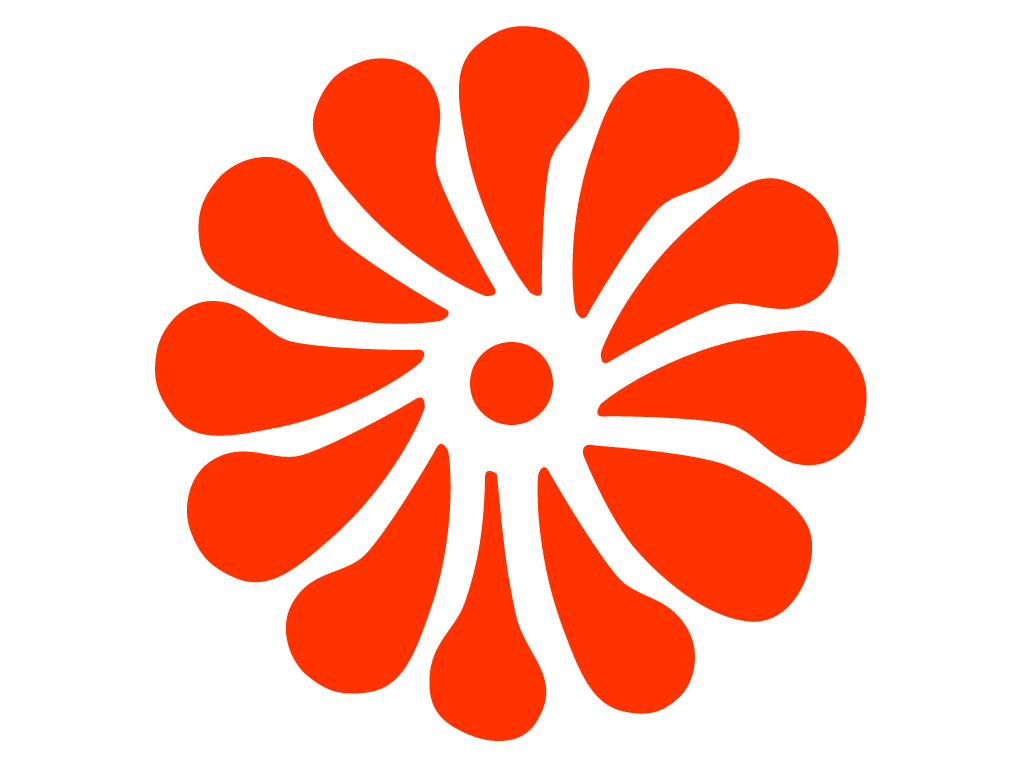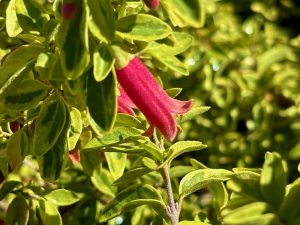Adenanthos sericeus (Coast Woollybush): soft silver texture for sun, wind, and sea
Adenanthos sericeus, known as Coast Woollybush or simply Woolly Bush, turns harsh, sun-blasted sites into calm, silvery scenes. This evergreen shrub from the south coast of Western Australia carries feathery, silk-soft foliage and small red flowers tucked deep in the leaves. It belongs to the Proteaceae, the protea family. That lineage gives it superpowers for lean, sandy soils and dry summers. Plant it where salt spray moves in, where wind never rests, or where you want a soft hedge you will reach out to touch every time you pass.
Meet Adenanthos sericeus: family, origin, and names
You’ll see the name listed as Adenanthos sericeus and sometimes as Coast Woollybush. Gardeners shorten it to Woolly Bush because the foliage feels like velvet. The genus name Adenanthos comes from Greek for “gland” and “flower,” a nod to the nectaries inside the tube-shaped blooms. The species epithet “sericeus” means silky, which fits the leaves perfectly. In the wild, the plant hugs coastal slopes near King George Sound and other granite-derived sands in Western Australia. There, ocean winds shape the crown, sea salt mists the leaves, and summer drought sets the rhythm. In gardens, that background translates to toughness with grace.
Adenanthos sericeus appearance and growth habit
Think of a fine-textured, upright shrub that invites touch. Stems rise erect, then feather outward with cloud-soft sprays. Each leaf splits again and again into hair-fine segments called laciniae. The segments are round in cross section and rarely thicker than 0.5 mm (about 0.02 in), so the whole plant reads as a silver haze from a distance and a downy lace up close. Fresh shoots often flush pink, then settle to silvery green or blue-green. In average garden conditions, expect 1.8–3 m (6–10 ft) tall and 1.2–1.8 m (4–6 ft) wide. In mild coastal belts, old plants can edge higher over time or even form a small, airy tree.
Flowering season and what to expect from the blooms
Woolly Bush flowers stay discreet by design. Individual blooms sit alone or in small groups at the ends of short side shoots, hidden in the foliage. Each flower is a slender red tube, about 2.5–3 cm (1–1.2 in) long, that springs open when the stigma releases at anthesis. You will notice the blooms most when the plant carries many at once, often in late winter or spring, though it can flower off and on all year in warm zones. Nectar draws small birds and pollinating insects. The show is never loud; instead it plays like a quiet soundtrack to the silver leaves.
Environmental strengths of Adenanthos sericeus
Coast Woollybush loves full sun and loves wind. It loves lean soil. Coast Woollybush tolerates salt spray without blinking, so you can plant it within splashing distance of the sea. Once established, it handles low water with ease and thrives in Mediterranean climates with dry summers. Cold tolerance drops near −6 to −4 °C (20–25 °F). Light tip burn can appear around −4 °C (24 °F), but mature plants often recover in spring. Heavy clay and waterlogged sites cause trouble, as roots need air. The Proteaceae root system also means low phosphorus needs. Too much phosphorus can harm the plant, so choose fertilizers carefully.
Landscape uses: where Coast Woollybush shines
Use Adenanthos sericeus or Coast Woollybush as a luminous hedge along a drive, as a wind-softening screen, or as a specimen that balances bold succulents. Its fine texture calms busy beds and frames modern hardscape. In coastal gardens, mass three to five plants at 1–1.2 m (3–4 ft) centers for a porous, living windbreak that still lets air move through.
In small spaces, prune it as a narrow column beside steps or shape it as a soft cube against a sunny wall. Florists prize the cut foliage for its long vase life, often two to three weeks in clean water, so a garden clump doubles as a cutting patch. Around the holidays in mild climates, young, pot-grown shrubs make charming living “Christmas trees” that shed almost no needles and carry tiny ornaments easily.
How to Grow Adenanthos sericeus
Light
Plant it in full sun. Aim for at least 6–8 hours of direct light daily. In very hot inland sites, a touch of late-day shade is fine, but abundant sun keeps the crown dense and the color bright.
Soil
Give this shrub sharp drainage. Sandy or gravelly soils suit it best. For heavy soils, raise the bed 15–20 cm (6–8 in) and blend coarse grit and compost into the top 30–40 cm (12–16 in). A pH from slightly acidic to neutral works well. Mildly alkaline coastal sands are also fine if drainage is fast. Avoid rich manures and slow-release products high in phosphorus; Proteaceae roots evolved for nutrient-poor conditions and react badly to excess P.
Watering
Water deeply, then let the soil dry partway. In the first season, soak the root zone once or twice a week, depending on heat and soil, wetting 20–25 cm (8–10 in) deep. After establishment, reduce to a thorough soak every 10–21 days in dry weather. Container plants need more frequent attention in heat because pots drain and dry quickly. Always check moisture with a finger to 5 cm (2 in). If it feels cool and slightly damp, wait. Avoid frequent, shallow sprinkles that push roots toward the surface and invite rot.
Fertilizing
Feed sparingly or not at all. In the ground, a spring topdress of composted bark or leaf mold often supplies all the nutrition the plant needs. If growth looks pale despite good light and drainage, use a low-phosphorus native-plant fertilizer once in spring at half label rate. For containers, choose a potting mix with slow, even release of nutrients and no added superphosphate. If leaves yellow between the veins in very alkaline soils, correct iron lock-up with chelated iron and add organic matter to buffer pH.
Temperature and hardiness
Adenanthos sericeus or Coast Woollybush grows best where winters stay mild. It’s reliable in USDA Zones 9–10 and in warm, protected parts of Zone 8. Expect foliage damage below −4 °C (24 °F) and dieback below −6 °C (20 °F). In marginal climates, site it near a heat-retaining wall and mulch the root zone 5–8 cm (2–3 in) deep in late autumn. If frost is forecast, throw a frost cloth over the plant for the night and remove it in the morning so light and air return.
Mulching
Mulch helps, but choose the right material. Spread a 5–7 cm (2–3 in) layer of washed gravel, shredded bark, or eucalyptus leaf litter over the root zone. Keep the mulch 5 cm (2 in) away from stems to prevent collar rot. Mulch moderates temperature, slows evaporation, and suppresses weeds without feeding excess nutrients.
Pruning and training
Prune with a gentle hand, little and often. Tip-pruning the newest growth encourages a fuller silhouette and more branching. Avoid cutting back to thick, old wood with no leaves, as buds deep in the wood may not reshoot. The best time to shape is after a flush of new growth or following a light flowering period. To form a hedge, set plants 90–120 cm (3–4 ft) apart and clip the tips three or four times in the first year to knit them together. To lift the crown and show off the trunk, remove a few lower side branches over two or three seasons rather than all at once.
Planting and spacing
Dig a hole as deep as the root ball and twice as wide. Roughen the sides so new roots can explore the native soil. Set the top of the root ball level with the surrounding grade or 2–3 cm (about 1 in) high on heavy ground. Backfill with the native soil blend, firm lightly, and water to settle. For an informal screen 1.5–1.8 m (5–6 ft) tall, plant at 1–1.2 m (3–4 ft) intervals. For a specimen, give it a circle at least 1.5 m (5 ft) wide, free of competing shrubs.
Containers
Woolly Bush takes well to pots. Choose a broad, stable container 40–50 cm (16–20 in) across with generous drainage holes. Use a gritty, low-phosphorus mix, such as two parts high-quality potting soil to one part perlite or pumice and one part fine pine bark. Water when the top 3–5 cm (1–2 in) dries. Repot every two to three years, stepping up one size at a time, and trim roots lightly if they spiral.
Propagation of Adenanthos sericeus
Cuttings give the most reliable results. Take semi-ripe cuttings in late spring through late summer when shoots are firm but still flexible. Select non-flowering tips about 8–12 cm (3–5 in) long and pencil-thick. Strip the lower leaves, make a clean cut just below a node, and dip the base in a light rooting hormone formulated for natives or low-phosphorus species. Insert into a 1:1 mix of perlite and coarse peat or fine bark.
Keep the tray bright but out of direct midday sun, and maintain gentle bottom warmth around 20–22 °C (68–72 °F). Mist lightly to prevent wilting, but never let the medium turn soggy. Rooting can take 6–10 weeks. Pot rooted cuttings on into a free-draining mix and grow them on for another season before planting out.
You can Coast Woollybush from seed, but seedlings vary and germination runs slow. If you try seed, lightly scarify, sow thinly into a very free-draining mix, and keep barely moist at 18–20 °C (64–68 °F). Transplant with care to avoid disturbing tender roots.
Pests and diseases on Coast Woollybush
In the right site, this shrub stays remarkably healthy. Most problems trace back to poor drainage, overwatering, or heavy, high-phosphorus feeding. Root rot is the number-one enemy in wet soils. Prevent it with fast drainage and conservative irrigation. If you garden in humid regions, improve airflow and keep mulch airy to deter collar rot.
In containers or tight courtyards, sap-sucking pests such as scale and mealybugs can appear on sheltered stems. You’ll see sticky honeydew or sooty mold on leaves below infestations. Start with the least invasive fix: prune out small colonies, rinse the plant with a firm spray early in the day, and encourage airflow. If needed, dab mealybugs with cotton swabs dipped in alcohol, or use a light horticultural oil, applied in the evening and never during heat waves. Mites are uncommon on this species but can flare in dusty, very dry conditions; a thorough rinse once a week often resets the balance.
Leaf scorch can follow hot, desiccating winds the first summer after planting. Deep watering ahead of a heat spike and a layer of gravel mulch protect the root zone and reduce stress. Yellowing between leaf veins may indicate iron lock-up in high-pH soils; correct with chelated iron and organic mulch.
Adenanthos sericeus through the seasons: a simple care calendar
In late winter, check for frost tip burn and trim lightly into live growth once danger of hard frost passes. In spring, refresh mulch, topdress containers with fresh, gritty mix, and begin a deep-and-dry watering rhythm. Early summer is ideal for selective tip-pruning to shape hedges and for taking semi-ripe cuttings. In midsummer heat, water deeply before heatwaves, then let the surface dry. In early autumn, give a final light shape if needed and reduce water as nights cool. Before winter, tidy any wind-snapped twigs and lay fresh mulch, keeping it off the stems. In frost-prone sites, set frost cloths within reach for overnight protection.
Design pairings that flatter Woolly Bush
Play texture against texture. Pair the silver fuzz of Adenanthos sericeus with the smooth leaves of Agave attenuata, the blue fans of Chamaerops humilis ‘Cerifera’, or the glossy domes of Pittosporum tobira ‘Nanum’. For a coastal meadow look, underplant with Lomandra, Carex testacea, and white Erigeron karvinskianus. In a Mediterranean courtyard, place a trio in tall terracotta jars against a sun-warmed wall, and weave in Lavandula, Salvia, and Cistus for a restrained, drought-wise palette. For cut foliage, grow a small block you can harvest every few weeks without thinning your main display.
Common problems and quick fixes
If Coast Woollybush looks lanky, you likely skipped tip pinching during the first year. Start a light, regular pinch program after each flush to promote density. If the foliage dulls and growth slows despite sun, check the pot or bed for compaction and improve drainage; Proteaceae sulk in tight, airless soils. If a hedge browns at the base, open the canopy with selective interior thinning to let light reach inner leaves, and avoid heavy, single hard cuts. If winter nips the tips, wait until new growth shows in spring, then trim just into green wood; cutting too early can invite deeper frost damage.
Why gardeners choose Adenanthos sericeus
Few shrubs offer such a gentle texture with such tough credentials. Coast Woollybush delivers a cool, modern look without constant grooming. It thrives where other plants complain: near hot pavement, along breezy coasts, and in sandy, low-fertility soils. It asks for sun, a fast-draining root run, and modest water. In return, it gives year-round silver, a soothing touch, and steady, understated bloom that keeps small wildlife visiting.
Key facts at a glance
Mature size: typically 1.8–3 m tall by 1.2–1.8 m wide (6–10 ft by 4–6 ft).
Flowering: sporadic to seasonal, often strongest in late winter and spring; small red tubular flowers nestled in foliage.
Hardiness: about −6 to −4 °C (20–25 °F); best in USDA Zones 9–10, warm 8 with shelter.
Soil and water: sharp drainage; low to moderate water once established.
Fertilizer: low-phosphorus only, and sparingly.
Uses: coastal hedge, wind filter, specimen, container, cut foliage, soft modern screen.
Plant it with sun. Water deeply, then let it rest. Keep the roots airy and the feed light. Shape it with small, regular pinches. Do these few things, and Adenanthos sericeus will add calm silver movement to your garden through every season.



